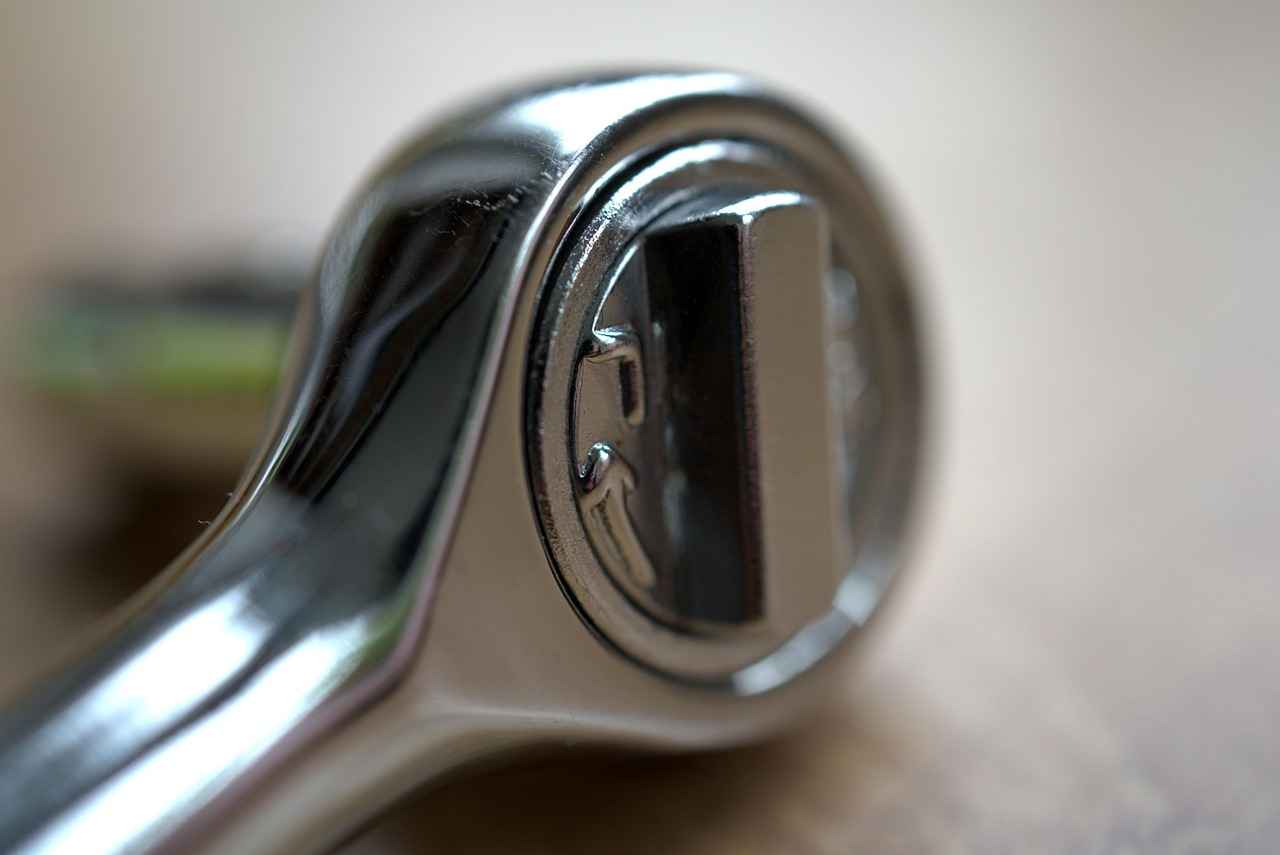This article provides a comprehensive guide on resetting the oil light in a Honda Accord. It will detail the necessary steps, troubleshooting tips, and maintenance advice to ensure optimal vehicle performance. Proper understanding and management of your vehicle’s oil light can significantly enhance your driving experience and prolong the life of your engine.
The oil light is a critical indicator of your vehicle’s health. When illuminated, it signifies that your engine oil may be low or that there are issues with the oil pressure. Ignoring this warning can lead to severe engine damage. Therefore, understanding the significance of the oil light is essential for preventing costly repairs.
- Low Oil Levels: This is the most common reason for the oil light to come on. It’s vital to regularly check your oil levels.
- Oil Leaks: If there’s a leak, it can lead to a drop in oil levels, triggering the light.
- Sensor Malfunctions: Sometimes, the oil light may illuminate due to faulty sensors, which can misread oil levels.
Before attempting to reset the oil light, it’s crucial to check your oil level:
1. Park your vehicle on a level surface.2. Turn off the engine and wait for a few minutes.3. Open the hood and locate the dipstick.4. Remove the dipstick, wipe it clean, and reinsert it.5. Pull it out again to check the oil level.
If the oil is low, add the appropriate type of oil recommended for your Honda Accord.
Resetting the oil light is a straightforward process. Follow these steps based on your Honda Accord model:
1. Turn the ignition to the "ON" position without starting the engine.2. Press the gas pedal three times within 10 seconds.3. Turn the ignition off and then start the engine.
For newer models, you may use the dashboard controls:
1. Turn the ignition to "ON."2. Use the menu button to navigate to "Settings."3. Select "Maintenance" and then "Oil Life."4. Choose the option to reset the oil life.
If the oil light does not reset, consider these common issues:
- Ensure that you have added sufficient oil.
- Inspect for any visible leaks.
- Check if the oil pressure sensor is functioning properly.
If the oil light persists after attempting to reset it, it may indicate more serious problems, such as oil pump failure or engine issues. In such cases, it’s wise to consult a mechanic for a thorough diagnosis.
Regular maintenance is key to preventing oil light issues. Schedule routine oil changes, check fluid levels, and maintain your vehicle according to the manufacturer’s recommendations. This proactive approach helps ensure optimal performance and longevity of your Honda Accord.
Selecting the right engine oil is crucial for your Honda Accord. Different oils serve various purposes, impacting engine performance and efficiency. Always refer to your owner’s manual for the recommended oil specifications.
Frequent oil changes are vital for engine longevity. Regularly changing your oil not only prevents the oil light from activating but also enhances engine efficiency and performance. Aim for oil changes every 5,000 to 7,500 miles, depending on your driving habits and oil type.
- Q: How often should I reset my oil light?
- A: Reset the oil light each time you change your oil to keep track of maintenance.
- Q: What if my oil light comes on again shortly after resetting?
- A: This may indicate a deeper issue; have your vehicle inspected by a professional.

Why is the Oil Light Important?
The oil light in your vehicle is a critical component of its overall health and functionality. Understanding why the oil light is important can significantly contribute to the longevity of your engine and prevent costly repairs. This section delves into the essential role the oil light plays in vehicle maintenance and engine health.
Firstly, the oil light serves as a warning indicator that alerts drivers to potential problems related to oil pressure and lubrication. When this light illuminates, it typically indicates that the oil pressure is too low, which can lead to insufficient lubrication of engine parts. This lack of lubrication can cause severe damage to the engine over time, resulting in expensive repairs or even complete engine failure.
Moreover, the oil light is not just a simple reminder; it is a vital part of your vehicle’s diagnostic system. It helps monitor the oil’s condition and ensures that it is circulating properly throughout the engine. If the oil light comes on, it is essential to take immediate action by checking the oil level and assessing its quality. Ignoring this warning can lead to overheating, increased friction, and ultimately, engine wear.
| Reasons for Oil Light Activation | Potential Consequences |
|---|---|
| Low oil levels | Increased engine wear and tear |
| Oil leaks | Engine overheating |
| Faulty oil pressure sensor | Erroneous readings leading to neglect |
| Oil contamination | Reduced lubrication efficiency |
It’s also important to note that the oil light can be triggered by a variety of factors beyond just low oil levels. For instance, oil leaks can significantly reduce the amount of oil available for lubrication, while a malfunctioning oil pressure sensor may give false readings, leading to unnecessary concern. Therefore, understanding these potential triggers can help drivers respond appropriately and maintain their vehicle’s health.
In addition to its role in signaling low oil pressure, the oil light also serves as a reminder for regular maintenance. Regular oil changes are crucial for keeping the engine running smoothly and efficiently. By adhering to a consistent oil change schedule, drivers can ensure that their vehicle’s engine remains in optimal condition, minimizing the chances of the oil light activating due to poor oil quality.
In summary, the oil light is a vital indicator of your vehicle’s engine health. By understanding its significance, drivers can take proactive measures to prevent engine damage. Regularly monitoring oil levels, addressing any issues promptly, and maintaining a routine oil change schedule are essential practices for ensuring the longevity and performance of your Honda Accord.

What Causes the Oil Light to Illuminate?
The oil light in your Honda Accord is a critical indicator of your vehicle’s engine health. When this light illuminates on your dashboard, it signals that something may be amiss with your vehicle’s oil system. Understanding the underlying causes of this warning light is essential for maintaining your car’s performance and longevity.
Several factors can trigger the oil light in your Honda Accord. Below, we explore the most common reasons, helping you diagnose the issue effectively:
- Low Oil Levels: One of the primary reasons for the oil light activation is insufficient oil levels. Regularly checking your oil and topping it off as necessary can help prevent this issue. If you notice the oil level is low, it might indicate that your engine is consuming oil or there is a leak.
- Oil Leaks: If your Honda Accord has developed an oil leak, it can cause the oil light to come on. Leaking oil can occur due to worn gaskets, seals, or even damage to the oil pan. It’s crucial to inspect your vehicle for any signs of oil spots on the ground or oil stains under the hood.
- Sensor Malfunctions: The oil pressure sensor plays a vital role in monitoring your oil pressure. If this sensor malfunctions or fails, it may trigger the oil light even when oil levels are adequate. Diagnosing a faulty sensor often requires professional assistance.
- Oil Quality Issues: Using the wrong type of oil or oil that has degraded over time can lead to insufficient lubrication. This can increase friction within the engine, prompting the oil light to illuminate. Regular oil changes with the correct oil type are essential for maintaining engine health.
- Engine Overheating: An overheating engine can also activate the oil light. High temperatures can lead to oil thinning, reducing its effectiveness. Monitoring your engine temperature and addressing any overheating issues promptly can help prevent this scenario.
- Oil Pump Failure: The oil pump is responsible for circulating oil throughout the engine. If the pump fails, it can cause a drop in oil pressure, triggering the oil light. This is a serious issue that requires immediate attention from a qualified mechanic.
Addressing these issues promptly can prevent further damage to your engine and maintain optimal performance. If the oil light remains illuminated after checking oil levels and addressing potential leaks, it is advisable to consult a professional mechanic for a thorough diagnosis.
In summary, understanding the various factors that can trigger the oil light in your Honda Accord is crucial for maintaining your vehicle’s health. Regular maintenance, including checking oil levels and quality, can go a long way in preventing these issues.

How to Check Your Oil Level
Checking your vehicle’s oil level is an essential part of maintaining your Honda Accord’s engine health. Before you proceed to reset the oil light, it is vital to ensure that the oil level is adequate and that the oil itself is in good condition. This section will guide you through the steps to accurately check your oil level and assess its condition.
Regularly checking your oil level is crucial because low oil levels can lead to severe engine damage. Oil lubricates the engine’s moving parts, reducing friction and preventing overheating. If the oil level is too low, it can cause the engine to run inefficiently or even fail. Therefore, ensuring that your oil is at the right level is a fundamental aspect of vehicle maintenance.
- Prepare Your Vehicle: Park your Honda Accord on a level surface and turn off the engine. Allow it to sit for a few minutes to let the oil settle.
- Locate the Dipstick: Open the hood and find the dipstick, which is usually marked with a bright handle for easy identification.
- Remove the Dipstick: Pull the dipstick out and wipe it clean with a lint-free cloth or paper towel. This will remove any oil residue.
- Check the Oil Level: Reinsert the dipstick fully, then remove it again to check the oil level. The dipstick will have markings indicating the optimal oil level. Ensure that the oil is between the minimum and maximum marks.
- Inspect the Oil Condition: While checking the level, take a moment to examine the oil’s color and consistency. Healthy oil should be a clear, amber color. If it appears dark, gritty, or has a burnt smell, it may need to be changed.
If you find that the oil level is below the minimum mark, it’s essential to add oil immediately. Make sure to use the recommended oil type for your Honda Accord, which can be found in the owner’s manual. Pour the oil in slowly, checking the level frequently to avoid overfilling.
- Dark Color: Fresh oil is typically light amber; if it’s dark, it may need to be changed.
- Grainy Texture: If the oil feels gritty, it indicates contamination.
- Burnt Smell: A burnt odor suggests that the oil has degraded and needs replacing.
By regularly checking your oil level and its condition, you can ensure that your Honda Accord runs smoothly and efficiently. This simple maintenance task can prevent potential engine problems and extend the lifespan of your vehicle. Always remember, taking a few minutes to check your oil can save you from costly repairs down the road.

Steps to Reset the Oil Light on Honda Accord
Resetting the oil light in your Honda Accord is an essential maintenance task that ensures your vehicle operates smoothly. This process is not only straightforward but also crucial for maintaining your car’s engine health. Below is a detailed guide tailored specifically for various Honda Accord models, making it easier for you to reset the oil light effectively.
Follow these step-by-step instructions to reset the oil light in your Honda Accord:
- Step 1: Turn on the Ignition – Insert the key into the ignition and turn it to the ON position without starting the engine. For newer models with a push-button start, press the button twice without pressing the brake.
- Step 2: Access the Menu – Use the dashboard controls to navigate through the menu. Look for the Settings or Maintenance option on the display screen.
- Step 3: Select Oil Life – Once in the settings, find the Oil Life section. This may be labeled as Oil Maintenance on some models.
- Step 4: Reset the Oil Light – Follow the on-screen prompts to reset the oil light. You may need to confirm your selection by pressing OK or Confirm.
- Step 5: Verify the Reset – After resetting, turn off the ignition and then restart the vehicle. Check to ensure that the oil light is no longer illuminated.
For many Honda Accord models, the ignition method is a reliable way to reset the oil light. Here’s how to do it:
1. Turn the ignition to the ON position.2. Press the gas pedal three times within 10 seconds.3. Turn off the ignition and restart the engine.
This method is particularly effective for older models, ensuring that the oil light is reset without the need for complex navigation through dashboard menus.
For newer Honda Accord models, the dashboard controls provide a user-friendly interface for resetting the oil light. Follow these steps:
- Locate the Home button on your dashboard.
- Navigate to the Vehicle Settings section.
- Find the Maintenance option.
- Select Oil Life and choose the option to reset it.
This approach is not only efficient but also allows you to manage other maintenance settings from the same interface.
If you encounter problems while resetting the oil light, consider the following troubleshooting tips:
- Ensure the ignition is fully turned to the ON position.
- Check if your vehicle’s battery is functioning properly.
- Verify that you are following the correct sequence of steps for your specific model.
Addressing these issues can help you successfully reset the oil light without needing professional assistance.
If the oil light remains illuminated after following the reset procedures, it may indicate underlying issues such as low oil levels or sensor malfunctions. In such cases, it is advisable to consult a qualified mechanic to diagnose and rectify the problem.
By understanding and following these steps, you can ensure that your Honda Accord’s oil light is reset correctly, contributing to the overall health and longevity of your vehicle’s engine.
Using the Ignition Method
The ignition method is a widely used technique for resetting the oil light in a Honda Accord. This method is particularly favored due to its simplicity and effectiveness, allowing drivers to quickly address the oil light indicator without the need for specialized tools or equipment. Below, we delve into the steps involved in using the ignition key to perform this reset, ensuring that you can maintain your vehicle’s performance with ease.
The ignition method involves a series of steps using your vehicle’s ignition key to reset the oil light indicator. This process is straightforward and can be accomplished in just a few minutes. It is essential to follow the steps carefully to ensure that the reset is successful.
- Turn Off the Engine: Ensure that your Honda Accord is completely turned off before proceeding with the reset.
- Insert the Key: Insert the ignition key into the ignition switch, but do not start the engine yet.
- Turn the Key to the ‘On’ Position: Rotate the key to the ‘On’ position, which is the second position before starting the engine. This action powers up the dashboard without starting the engine.
- Press the Gas Pedal: Within five seconds, press the gas pedal three times in quick succession. This step is crucial for triggering the reset process.
- Turn Off the Ignition: After pressing the gas pedal, turn the ignition key back to the ‘Off’ position.
- Start the Engine: Finally, start your Honda Accord to check if the oil light has been successfully reset. If the light remains off, the process was successful.
Using the ignition method is beneficial for several reasons:
- Convenience: This method can be performed quickly and does not require any additional tools.
- Cost-Effective: It eliminates the need for a mechanic visit, saving you time and money.
- Accessibility: Most drivers can easily follow the steps without prior experience.
While the ignition method is generally reliable, there may be instances where it does not work as intended. Common issues include:
- Timing: If the gas pedal is not pressed quickly enough, the reset may fail.
- Electrical Issues: Problems with the ignition system or battery may prevent the reset from occurring.
- Persistent Oil Light: If the oil light remains on after resetting, it may indicate a deeper mechanical issue that requires professional diagnosis.
The ignition method is an effective way to reset the oil light in your Honda Accord, ensuring that you can keep track of your vehicle’s maintenance needs. By following the outlined steps carefully, you can quickly resolve the oil light issue and maintain optimal engine performance. Remember, if the oil light continues to illuminate after a reset, it is crucial to investigate further to avoid potential engine damage.
Using the Dashboard Controls
for resetting the oil light in your Honda Accord can be an intuitive process, especially for newer models equipped with advanced technology. This method allows you to navigate through the vehicle’s dashboard settings efficiently, ensuring that the oil light is reset without any hassle. Here’s a detailed guide on how to utilize the dashboard controls effectively.
First, ensure that your vehicle is in the ON position, but do not start the engine. This is crucial as the dashboard settings can only be accessed when the ignition is on. Once the dashboard lights illuminate, follow these steps:
- Locate the Menu Button: On the steering wheel or dashboard, find the menu button that allows you to navigate through the vehicle settings.
- Access Settings: Press the menu button until you see the settings option displayed on the screen.
- Select Maintenance: Within the settings, look for the maintenance section. This is where you can manage various vehicle maintenance reminders, including the oil light.
- Reset Oil Light: Once in the maintenance menu, find the option to reset the oil light. This may be labeled as “Oil Life” or “Oil Light Reset.”
- Confirm Reset: Follow the prompts on the screen to confirm the reset. You may need to press the enter button or select “yes” to finalize the process.
After completing these steps, the oil light should turn off, indicating that the reset was successful. If the light remains illuminated, it may suggest that there are underlying issues that require further investigation.
It’s essential to remember that the dashboard controls are designed for user-friendliness, but the specific steps may vary slightly depending on the model year of your Honda Accord. For precise instructions, always refer to your vehicle’s owner manual. This resource provides detailed information tailored to your specific model, ensuring that you follow the correct procedure.
In addition to the reset process, it’s important to maintain regular oil changes and monitor your oil levels to prevent the oil light from activating again. Keeping track of your vehicle’s maintenance schedule not only enhances performance but also extends the life of your engine.
By understanding how to navigate the dashboard controls and reset the oil light, you empower yourself to take proactive measures in maintaining your Honda Accord. This knowledge not only saves time but also contributes to safer driving and better vehicle longevity.

Troubleshooting Common Issues
When the oil light in your Honda Accord remains illuminated after attempting to reset it, it indicates that there may be underlying issues that require attention. Understanding these issues is crucial for maintaining the health of your vehicle’s engine and ensuring its longevity. In this section, we will explore common troubleshooting methods to help identify and resolve persistent oil light problems.
There are several reasons why the oil light might not reset properly. Here are some common causes:
- Low Oil Level: One of the most frequent reasons for an oil light that won’t turn off is low oil levels. Always check your oil level before attempting a reset.
- Oil Leaks: If there are leaks in the oil system, the oil level will drop, causing the light to remain on. Inspect your vehicle for any visible signs of oil leaks.
- Faulty Oil Pressure Sensor: A malfunctioning oil pressure sensor can send incorrect signals to the dashboard, keeping the oil light illuminated even if oil levels are adequate.
- Oil Quality Issues: Old or contaminated oil can also trigger the oil light. Regular oil changes are essential to prevent this issue.
To effectively troubleshoot your Honda Accord’s oil light issue, follow these steps:
- Check Oil Level: Use the dipstick to check the oil level. If it’s low, add the appropriate type of oil.
- Inspect for Leaks: Look under your vehicle for any signs of oil pooling or dripping.
- Test the Oil Pressure Sensor: If you suspect the sensor is faulty, consider using a multimeter to test its functionality or consult a professional mechanic.
- Change the Oil: If the oil is dirty or has not been changed in a while, perform an oil change to see if that resolves the issue.
If you have followed these troubleshooting steps and the oil light still does not reset, it may be time to seek professional help. Persistent oil light issues could indicate more serious problems, such as:
- Engine Damage: Prolonged operation with low oil levels can lead to severe engine damage.
- Oil Pump Failure: If the oil pump is not functioning correctly, it may not circulate oil effectively, leading to a drop in oil pressure.
- Electrical Issues: Problems with the vehicle’s electrical system can also affect the oil light’s operation.
In summary, troubleshooting the oil light on your Honda Accord involves a systematic approach to identifying the root cause of the issue. By checking oil levels, inspecting for leaks, and testing the oil pressure sensor, you can often resolve the problem. However, if these steps do not yield results, consulting a mechanic is crucial to prevent further damage to your vehicle.

When to Seek Professional Help
When it comes to vehicle maintenance, the oil light in your Honda Accord serves as a critical indicator of engine health. While it may sometimes illuminate due to minor issues, there are instances when it signals more serious problems that require immediate attention. Understanding when to seek professional help can prevent further damage and ensure the longevity of your vehicle.
The oil light can illuminate for various reasons, ranging from simple to complex. Here are some serious issues to be aware of:
- Low Oil Pressure: If the oil light turns on and remains illuminated, this could indicate that the oil pressure is dangerously low, which can lead to severe engine damage.
- Oil Leaks: Persistent oil leaks can cause the oil level to drop, triggering the oil light. If you notice oil spots under your vehicle, it’s essential to have it checked.
- Oil Pump Failure: A malfunctioning oil pump can prevent oil from circulating effectively throughout the engine, leading to overheating and potential engine failure.
- Engine Overheating: If the oil light is accompanied by an overheating engine, this is a clear sign that professional intervention is required.
While it’s tempting to ignore the oil light, certain signs indicate that it’s time to consult a mechanic:
- Persistent Illumination: If the oil light remains on after checking and topping off the oil, this is a sign of a deeper issue.
- Noisy Engine: Unusual sounds coming from the engine, such as knocking or grinding, can indicate a lack of lubrication.
- Decreased Performance: If you notice a drop in acceleration or overall performance, it could be linked to oil-related issues.
Attempting to diagnose oil light issues without professional knowledge can lead to misdiagnosis and costly repairs. Mechanics have the tools and expertise to conduct a thorough inspection, identifying the root cause of the problem. They can check:
- Oil levels and condition
- Oil pressure readings
- Possible leaks or blockages
When you take your Honda Accord to a mechanic for oil light issues, expect the following:
- Comprehensive Inspection: The mechanic will perform a detailed inspection of the engine and oil system.
- Diagnostic Tests: They may run diagnostic tests to check for error codes that could indicate specific issues.
- Recommendations: Based on their findings, the mechanic will provide recommendations for repairs or maintenance.
In conclusion, while the oil light can sometimes indicate minor issues, it is crucial to recognize when it signals a more serious problem. Always err on the side of caution and consult a professional mechanic if you experience persistent oil light illumination or any accompanying symptoms. Doing so will not only protect your vehicle but also save you from potentially costly repairs down the line.

Maintaining Your Honda Accord’s Engine Health
Maintaining your Honda Accord’s engine health is crucial for ensuring its longevity and optimal performance. Regular maintenance not only prevents issues such as the oil light illuminating but also contributes to overall vehicle efficiency. This section outlines essential practices that every Honda Accord owner should follow to keep their engine in top condition.
- Regular Oil Changes: One of the most significant aspects of engine maintenance is changing the oil at regular intervals. Fresh oil lubricates engine parts, reduces friction, and helps in dissipating heat. It is recommended to follow the manufacturer’s guidelines regarding oil change frequency, typically every 5,000 to 7,500 miles.
- Check Oil Levels: Regularly checking the oil level is vital. Low oil levels can lead to severe engine damage. Use the dipstick to assess the oil level and its condition. If the oil appears dark or gritty, it may be time for a change.
- Monitor for Leaks: Inspect your vehicle for any signs of oil leaks. Puddles of oil under your car or a burning oil smell can indicate a problem. Addressing leaks promptly can prevent more severe engine issues down the line.
- Use Quality Oil: Choosing the right type of oil is essential for your Honda Accord. Consult your owner’s manual to determine the recommended oil type and viscosity. Using high-quality oil can enhance engine performance and protect against wear.
- Regular Filter Changes: The oil filter plays a critical role in maintaining engine health by trapping dirt and debris. Changing the oil filter during oil changes helps ensure that only clean oil circulates through the engine.
- Engine Air Filter Maintenance: A clean engine air filter allows for optimal airflow to the engine, improving fuel efficiency and performance. Check and replace the air filter as needed, typically every 15,000 to 30,000 miles.
- Coolant Levels: Maintaining proper coolant levels is also vital for engine health. Overheating can lead to significant engine damage. Regularly check the coolant reservoir and top off as necessary, ensuring that you use the correct type of coolant.
Why is Regular Maintenance Important? Regular maintenance not only prevents the oil light from illuminating but also ensures that your vehicle runs smoothly and efficiently. Neglecting these practices can lead to costly repairs and reduced vehicle performance. By investing time in maintenance, you can save money in the long run and enhance your driving experience.
In summary, maintaining your Honda Accord’s engine health requires a proactive approach. By following these best practices, you can prevent oil light issues and ensure your vehicle remains reliable and efficient. Remember, a well-maintained engine not only performs better but also contributes to your safety on the road.

Understanding Engine Oil Types
When it comes to maintaining your Honda Accord, one of the most critical aspects is selecting the appropriate engine oil. The right engine oil not only ensures smooth operation but also enhances the overall performance and longevity of your vehicle. In this section, we will delve into the various types of engine oils available, their unique properties, and how they affect your vehicle’s performance.
Engine oils are primarily categorized into three types: conventional, synthetic, and blended oils. Each type has its own set of advantages and is designed for specific driving conditions and engine types.
- Conventional Oil: This is the most basic type of engine oil, derived from crude oil. It’s suitable for older vehicles and those that do not require high-performance oils. However, its properties can degrade faster, especially under extreme temperatures.
- Synthetic Oil: Engineered in laboratories, synthetic oils offer superior performance in extreme conditions. They provide better lubrication, reduce engine wear, and have a longer lifespan compared to conventional oils. These oils are ideal for high-performance engines and vehicles that operate in severe conditions.
- Blended Oil: As the name suggests, blended oils are a mixture of conventional and synthetic oils. They aim to provide a balance between cost and performance, making them a suitable choice for many drivers.
The type of engine oil you choose can significantly influence your Honda Accord’s performance. Here are some key factors to consider:
- Viscosity: This refers to the thickness of the oil. Higher viscosity oils perform better at high temperatures, while lower viscosity oils are better for cold starts. Always refer to your owner’s manual for the recommended viscosity grade.
- Engine Cleanliness: Synthetic oils contain additives that help keep the engine clean by preventing sludge buildup. A cleaner engine runs more efficiently and has a longer lifespan.
- Fuel Efficiency: Using the right engine oil can improve fuel economy. Synthetic oils tend to reduce friction, which can lead to better mileage.
Your driving habits and environmental conditions play a crucial role in selecting the right engine oil. For instance, if you frequently drive in stop-and-go traffic or in extreme temperatures, a synthetic oil might be the best option for you. On the other hand, if you drive a classic model or have a vehicle with lower performance demands, conventional oil may suffice.
Always refer to your Honda Accord’s owner’s manual for specific recommendations regarding oil types and change intervals. The manufacturer provides guidelines based on extensive testing to ensure optimal performance and protection for your engine.
In summary, choosing the right engine oil is not just a matter of preference; it is essential for the health and performance of your Honda Accord. By understanding the different types of engine oils and their impact on your vehicle, you can make an informed decision that will enhance your driving experience.

Importance of Regular Oil Changes
Maintaining your vehicle’s engine health is crucial for its longevity and performance. One of the most significant aspects of engine maintenance is regular oil changes. This practice not only enhances engine efficiency but also plays a vital role in preventing the activation of the oil light, which can indicate serious engine issues.
Why are frequent oil changes so important? Over time, engine oil can become contaminated with dirt, debris, and other particles. This contamination can lead to engine wear and reduced efficiency. By changing the oil regularly, you ensure that your engine is lubricated with clean oil, which helps in maintaining optimal performance.
- Prevention of Oil Light Activation: Regular oil changes help keep the oil level consistent and clean, reducing the chances of the oil light illuminating. When oil levels drop or the oil becomes too dirty, the light may activate, signaling a potential problem.
- Improved Engine Efficiency: Clean oil functions better at lubricating engine parts, leading to smoother operation and improved fuel efficiency. This can translate to better mileage and lower fuel costs.
- Extended Engine Life: Engines that receive regular oil changes tend to last longer. This is because clean oil minimizes friction and wear on engine components, which can lead to costly repairs if neglected.
So, how often should you change your oil? While the general recommendation is every 3,000 to 5,000 miles, it’s essential to consult your vehicle’s owner manual for specific guidelines. Factors such as driving conditions, oil type, and vehicle age can influence the frequency of oil changes.
Moreover, it’s not just about changing the oil; it’s also essential to use the right type of oil for your vehicle. Different engines require different oil grades, and using the wrong type can lead to engine damage over time. Always refer to the manufacturer’s recommendations for the best results.
In summary, regular oil changes are a fundamental aspect of vehicle maintenance that can save you money and extend the life of your engine. By staying proactive with oil changes, you can prevent the oil light from coming on and ensure that your Honda Accord runs smoothly for years to come.

FAQs About Honda Accord Oil Light Reset
The oil light reset process is a common concern for many Honda Accord owners. This section aims to clarify some of the most frequently asked questions regarding this important maintenance procedure. Understanding the oil light reset process can help ensure that your vehicle runs smoothly and efficiently.
The oil light serves as a crucial alert for drivers, indicating that there may be an issue with the engine oil. When illuminated, it typically means that the oil pressure is low or that the oil needs to be changed. Ignoring this warning can lead to severe engine damage, making it essential to address it promptly.
After changing the oil, it is necessary to reset the oil light. This action ensures that the oil change interval is accurately tracked by the vehicle’s computer system. If you notice that the oil light remains on even after changing the oil, it may indicate that the reset procedure has not been performed.
Yes, resetting the oil light on a Honda Accord is a straightforward process that you can do yourself. The method varies slightly depending on the model year, but generally, it involves using the ignition key or dashboard controls. Following the correct steps can save you time and money.
If the oil light does not turn off after you have reset it, this may indicate a deeper issue with your vehicle. Common problems include:
- Low Oil Levels: Check the oil level using the dipstick to ensure it’s within the recommended range.
- Oil Leaks: Inspect for any visible leaks under the vehicle.
- Faulty Oil Pressure Sensor: A malfunctioning sensor may send incorrect signals to the dashboard.
No, it is not safe to drive with the oil light illuminated. Doing so can lead to significant engine damage, as the oil is essential for lubrication and cooling. If the light comes on, it is advisable to stop the vehicle and check the oil level immediately.
Ignoring the oil light can result in severe consequences, including:
- Engine Overheating: Lack of proper lubrication can cause the engine to overheat.
- Increased Wear and Tear: Insufficient oil can lead to increased friction and wear on engine components.
- Complete Engine Failure: In extreme cases, neglecting the oil light can lead to catastrophic engine failure, requiring costly repairs or replacement.
Regular oil changes are vital for maintaining engine health. It is generally recommended to change your oil every 5,000 to 7,500 miles, depending on your driving habits and the type of oil used. Always refer to your owner’s manual for specific recommendations tailored to your Honda Accord model.
No special tools are required to reset the oil light in a Honda Accord. All you need is your vehicle’s ignition key or access to the dashboard controls. However, having a user manual handy can be beneficial for specific instructions related to your model year.
If you have further questions about the oil light reset process or other maintenance concerns, consider consulting your vehicle’s owner manual or visiting a certified Honda dealership for expert assistance.
Frequently Asked Questions
- How do I reset the oil light in my Honda Accord?
Resetting the oil light is a breeze! For most models, just turn the ignition to the “ON” position without starting the engine, then press the gas pedal three times. This should do the trick!
- Why did my oil light come on?
Your oil light might illuminate due to a few reasons like low oil levels, oil leaks, or even a faulty sensor. It’s essential to check your oil level and inspect for leaks to avoid serious engine damage.
- How often should I change my oil?
Typically, you should change your oil every 5,000 to 7,500 miles, but it can vary based on your driving habits and the type of oil used. Regular oil changes help maintain engine health and prevent the oil light from coming on.
- What should I do if the oil light doesn’t reset?
If the oil light doesn’t reset, it might indicate a deeper issue. Check your oil level and condition first. If everything looks good but the light remains on, consult a mechanic for further diagnosis.
- Can I use any type of oil for my Honda Accord?
Not all oils are created equal! It’s crucial to use the oil type recommended in your owner’s manual. Using the right oil ensures optimal performance and helps keep that pesky oil light at bay.



